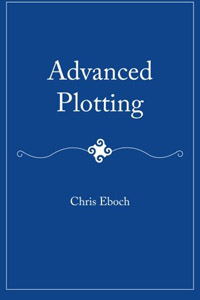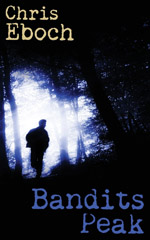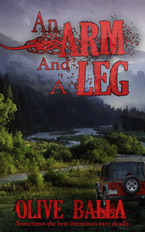by Kirt Hickman
 I do a lot of critiques, and I see similar mistakes in submission after submission. Eventually, I began to realize that the problems I see most often are those that I didn’t learn from writing books. For whatever reason, these key pieces of advice have managed to slip through the cracks. Writing books don’t discuss them, or the books contradict one another, leaving writers floundering for the correct answer.
I do a lot of critiques, and I see similar mistakes in submission after submission. Eventually, I began to realize that the problems I see most often are those that I didn’t learn from writing books. For whatever reason, these key pieces of advice have managed to slip through the cracks. Writing books don’t discuss them, or the books contradict one another, leaving writers floundering for the correct answer.
Filter Words
I first learned about the damage filter words can do in a critique that David Corwell wrote for me. Later I found an article that called them “viewpoint intruders”—an apt name, because that’s what they do. These are words like saw, felt, heard, watched, etc., that take the reader out of the character’s point of view.
Consider this example from a critique submission, in which the filter words are shown in bold text.
Clara looked around at her fellow passengers. She overheard snatches of conversation in Italian. She saw parents feeding snacks to children, even a breast-feeding mother.
Here, the reader isn’t looking at passengers, overhearing conversations, or seeing parents feed children. The reader is standing at a distance, watching Clara as Clara looks at, overhears, and sees the action of the scene. These words have become a filter between Clara and the reader.
The author can eliminate the first sentence because Clara doesn’t see herself looking around. The rest of the passage can be written without filter words:
All around Clara, people spoke in Italian. Parents fed snacks to their children. One woman nursed her infant.
Notice that the original narrative focuses on Clara (Clara looked, she overheard, she saw), while the revised narrative focuses on the things Clara is focused on (people spoke, parents fed, one woman nursed). This is as much an issue of character viewpoint as it is an issue of narrative style. When you write, don’t focus on your viewpoint character. Rather, focus on what your viewpoint character is focused on.
Prepositional Phrases
Many books will tell you to omit any word that’s not absolutely necessary, and that’s good advice. What they don’t point out is that those unnecessary words often appear as prepositional phrases. Examine every prepositional phrase in your manuscript. Does it provide information that’s both new and necessary? Consider this example:
Chase stood among the clues in the cockpit and let them tell their story.
If the reader already knows Chase is in the cockpit, write this as:
Chase stood among the clues and let them tell their story.
Depending on the context, you may only need:
Chase let the clues tell their story.
Now you’re writing a tight narrative.
“That”
This one I learned from Larry Greenly at an SWW meeting years ago. The word that is often used unnecessarily. It becomes a speed bump that slows down the reader. Consider the following example, excerpted from a letter my hero wrote to his daughter in my own science fiction novel Worlds Asunder:
I’m writing to let you know that my homecoming will be delayed. I know that you and the girls were looking forward to seeing me, but a case has come up that will delay my departure.
Wherever you see the word that, delete it and read the sentence without it. If the sentence still makes sense, omit the word that. In this example, only the third occurrence of that is necessary.
I’m writing to let you know my homecoming will be delayed. I know you and the girls were looking forward to seeing me, but a case has come up that will delay my departure.
Direct Address
Direct address occurs when a character says the name of the person he’s addressing:
“What time is it, Jennifer?”
She consulted her watch. “Four o’clock, Tommy. Why?”
“Already?” He snatched up his backpack and bolted for the door. “Jennifer, my mom’s gonna kill me.” He didn’t even help clean up the toys they’d strewn across the living room.
Some books advise writers to use direct address as a way to avoid attributives. I disagree. Notice how much more natural the dialogue feels when I move the characters’ names from the spoken lines to the dialogue tags:
“What time is it?” Tommy asked suddenly.
Jennifer consulted her watch. “Four o’clock. Why?”
“Already?” Tommy snatched up his backpack and bolted for the door. “My mom’s gonna kill me.” He didn’t even help clean up the toys they’d strewn across the living room.
Widow/Orphan Control
Widow/Orphan control is a function in MS Word that tries to prevent a single line of a paragraph from appearing at the top or bottom of a page. When this function is turned on, it creates a variation in the number of lines from page to page. It looks sloppy. Turn this function off in the “Format Paragraph” menu, under the “Line and Page Breaks” tab.
Proofreading
Many books advise proofreading carefully. In my experience, that’s not enough. You must have somebody else—a qualified editor—proofread your work. Writing books do not sufficiently stress the importance of this. When I started paying a proofreader to go over my submissions, I began placing in contests and getting positive replies from editors and agents about 50 percent of the time. Prior to that, I received nothing but rejections. Don’t underestimate the power of proofreading.
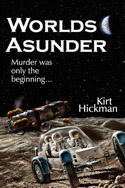 Kirt Hickman is a technical writer turned fiction author. His books include three sci-fi thriller novels Worlds Asunder (2008), Venus Rain (2010) and Mercury Sun (2014), the high fantasy novel Fabler’s Legend (2011), and the writers’ how-to Revising Fiction: Making Sense of the Madness (2009).
Kirt Hickman is a technical writer turned fiction author. His books include three sci-fi thriller novels Worlds Asunder (2008), Venus Rain (2010) and Mercury Sun (2014), the high fantasy novel Fabler’s Legend (2011), and the writers’ how-to Revising Fiction: Making Sense of the Madness (2009).
This article was originally published in the May 2012 issue of SouthWest Sage and is reprinted here by permission of the author.


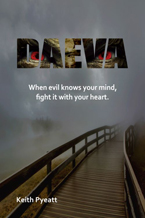
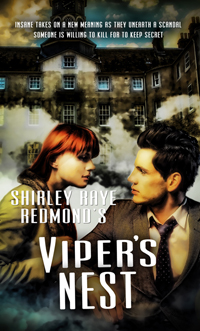


 KL Wagoner (writing as Cate Macabe) is the author of This New Mountain: a memoir of AJ Jackson, private investigator, repossessor, and grandmother. She has a new speculative fiction blog at
KL Wagoner (writing as Cate Macabe) is the author of This New Mountain: a memoir of AJ Jackson, private investigator, repossessor, and grandmother. She has a new speculative fiction blog at 